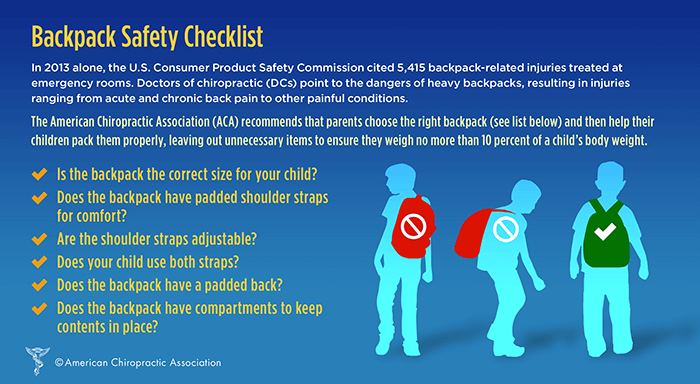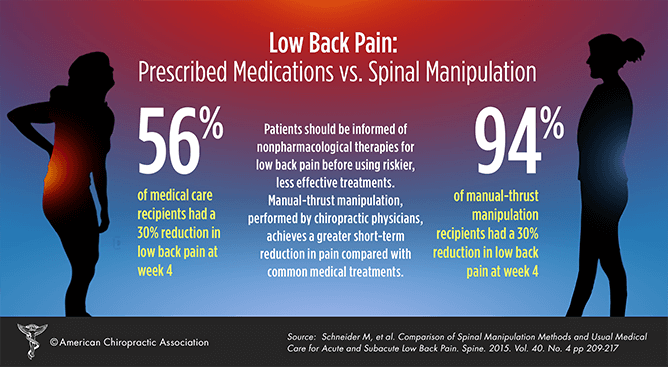Do We Under Treat Headaches?
Doctor of Chiropractic Comments: With all the different types of pain relievers available at the corner drug store, you’d think headache sufferers would have a solution to their problem. But, such is not the case, and headaches continue to be a great burden on society, afflicting millions of people and causing economic and social losses, in addition to personal pain. What’s more, it seems general medical physicians may under-diagnose this common problem.
A study from England (Br J Gen Pract 2008; 58(547):102) has highlighted this widespread issue. The researchers studied over 91,000 adult patients who had recently reported a headache. Amazingly, seventy percent of these patients were not given a diagnosis. It was suggested by the authors that general medical physicians have difficulty in diagnosing headache presentations.
Causes of Headaches
It’s important to diagnose the cause of a headache. The spine is often overlooked as having the potential for causing a headache. Too often, headaches are thought to have their cause in the head. While this is where  the pain is most prominent (as opposed to the neck), neck symptoms, such as muscle tension, knots and painful tissues, also contribute to the pain picture. If your neck mobility is also reduced, this can also be a indicator that the neck could be the source of the head pain.
the pain is most prominent (as opposed to the neck), neck symptoms, such as muscle tension, knots and painful tissues, also contribute to the pain picture. If your neck mobility is also reduced, this can also be a indicator that the neck could be the source of the head pain.
When bad neck posture is present, this can manifest as a forward head posture. Patients who have had previous whiplash injuries can often show this type of posture. Sprains of the small vertebral joints can be enough to produce head pain and need to be addressed. When the headache is thought to originate in the neck, it is called “cervicogenic.”
Neck problems have also been implicated in certain cases of tension-type, as well as migraine headaches, but how this occurs exactly is still being investigated.
Whatever their cause, headaches have a devastating impact on our quality of life and need to be effectively treated. Chiropractic care has been shown in several studies to reduce headache pain and is an important non-drug option for patients. While drug treatments can be quite effective for some patients, one also has to consider long-term side effects when considering this management approach.
If you would like to discuss your headache symptoms, we can consult with you to see if this type of care is appropriate.
Dr. Ward Beecher practices at Beecher Chiropractic Clinic at 1001 Pineloch, Ste 700 Houston, TX 77062. You can schedule an appointment at BeecherChiropractic.com or by calling (281) 286-1300. If you have any questions regarding this blog, please comment below!
Low Back Pain: An Ice Pack or the Hot Tub?
To download a copy of this week’s newsletter, please click here.
Back pain doctor comments: Many patients do some self-care when they first hurt their lower back, hoping this will keep them out of a doctor’s office. Home remedies sometimes make the pain go away and sometimes they don’t. It depends on what you try. When the back is first hurt, it’s often a sprain/strain type of injury with accompanying muscle spasm. When a nerve in the low back gets pinched or irritated, the body will protect the delicate nerves by keeping you from moving and risking further nerve injury. The easiest way for the body to do this is to cause the back muscles to spasm and splint the injured area.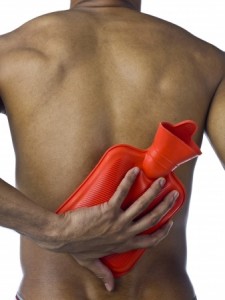
Is Heat or Cold Better for Lower Back Pain?
Muscle pain can be quite severe and heat can sometimes soothe muscle pain. For this reason, many patients take to the heating pad or the hot tub to try and get some relief. This should be avoided in an acute injury because inflammation is present. With inflammation, there is increased heat and the additional heat you provide is like adding gasoline to a fire. The results are usually not good. You will probably feel good for 20-30 minutes and then the pain will return.
A better choice with an acute injury is to ice the area, but this also needs to be done with some caution. The simplest ice pack is ice cubes placed in a plastic bag. While effective, you can cause a frostbite injury if you leave the pack on for too long. When you first ice the area, you will go through several phases before some pain relief is achieved. At first the pack will feel cold. The next phase is a burning sensation and the ice will almost feel hot. This is followed by an aching or throbbing sensation. Just before the area is numbed, a very sharp pain will be experienced followed by the relief you desire. This can take from five to ten minutes to go through all of the phases. Once numbness is achieved, the pack should be removed. This will be about 20 minutes. You should most definitely not fall asleep while the pack is on.
Treatment for Lower Back Pain in Houston
If this simple procedure does not solve the problem, it’s best to get your spine checked by a doctor of chiropractic.
Dr. Ward Beecher practices at Beecher Chiropractic Clinic at 1001 Pineloch, Ste 700 Houston, TX 77062. You can schedule an appointment at BeecherChiropractic.com or by calling (281) 286-1300. If you have any questions regarding this blog, please comment below!
A Possible Link Between Headache and High Blood Pressure
To download a copy of this newsletter, please click here.
Houston Area Chiropractor Comments: Headaches are one of the common pains we get. High blood pressure is also very common, affecting about 50 million Americans. Could they be linked? Yes, but not in the way you may think. Some doctors question whether taking pain pills actually corrects the cause of the headache. But there are also other, perhaps more seemingly silent concerns.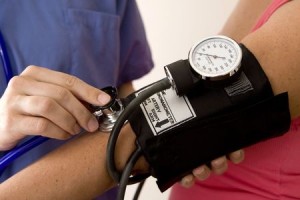
Is simply cutting the fire alarm when the house is on fire ever a good idea? If your headache is coming from a problem such as a sprained and subluxated neck, is taking a pill going to do anything to help the joint injury?
We all see the TV commercials and the long pill aisles at the supermarket. We must be consuming quite a bit and that is true. But could our excessive use of these drugs be causing another problem, one that may not be explained on the pill bottle label?
Researchers have looked at over-the-counter medications such as acetaminophen (e.g. Tylenol) and ibuprofen (e.g. Advil), to see if taking them over the long-term elevates the risk for developing high blood pressure (Hypertension 2005;46:500. Women’s Health Study I and II) The study investigated 5,123 women between the ages of 34 and 77 and followed them over many years.
Compared with women who did not use acetaminophen, the relative risk for those who took >500 mg per day was 1.93 (1.30 to 2.88) among older women. and 1.99 (1.39 to 2.85) among younger women. A relative risk of 1.93 is a 93% increase in risk. The range was a 30% increase to a 185% increase.
For nonsteroidal anti-inflammatory drugs (e.g. ibuprofen), the risk of developing high blood pressure in older women also increased, ranging from a 78% to a 161% elevation. For younger women, the increased risks ranged from a 10% increase to a 132% increase.
Aspirin use was not associated with developing high blood pressure. The authors concluded that because acetaminophen and nonsteroidal anti-inflammatory drugs are commonly used, they might contribute to the high prevalence (percent of the population with this disease) of high blood pressure in the United States.
Dr. Ward Beecher practices at Beecher Chiropractic Clinic at 1001 Pineloch, Ste 700 Houston, TX 77062. You can schedule an appointment at BeecherChiropractic.com or by calling (281) 286-1300. If you have any questions regarding this blog, please comment below!
Carpal Tunnel and the Magic Bullet
To download a copy of this newsletter, please click here.
Chiropractor in Clear Lake Comments: Patients with severe carpal tunnel symptoms often become desperate in their search for a cure. Most patients with chronic diseases fall prey to this, looking for the one answer, the one magic pill or magic bullet that will rid them of all their troubles now and forever.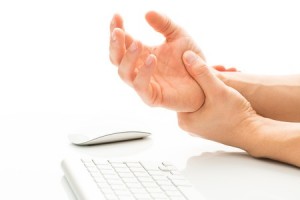
In carpal tunnel care, you may have looked for the magic splint, the best surgeon, the one exercise, the one vitamin or herb or magnet, to find relief of your pain. As carpal tunnel symptoms worsen, affecting not only our daily lives and even our jobs, the urgency to find the one thing becomes greater and greater.
It’s no wonder there’s no shortage of promises and potions out there to deliver you the magic bullet. Perhaps you could look at this problem in another way? Not the one thing that has thus far eluded you, but rather the many things you’ve found difficult to face and take care of, the things that may prevent problems but only if you faithfully adhere to them. What I’m getting at is this: there are many pieces to the carpal tunnel puzzle and you can think of hand pain more of as a signal that the final straw that is finally breaking the camel’s back.
Yes it is true that those with vitamin deficiencies get more nerve symptoms and taking B6 can help some people with their symptoms. But B6 is part of the B-complex that we should be getting everyday in our diets. Whether you have symptoms or not, you should be eating right, and that means lots of vegetables. Most of us will benefit from correcting our lack of vitamin intake by taking different vitamins in supplement form.
Or maybe we are overweight; it’s true of 60% of Americans. We need to maintain an ideal weight whether or not our hands hurt. Or perhaps we have a neck problem that we are not addressing. Sometimes neck problems cause hand pain and sometimes they do not. Whether or not the neck itself is causing your hand to hurt, you should get your neck fixed so that movements are free and symmetrical.
Lastly, exercise and stretching should be party of everyone’s daily routine, not just those with hand symptoms.
Dr. Ward Beecher practices at Beecher Chiropractic Clinic at 1001 Pineloch, Ste 700 Houston, TX 77062. You can schedule an appointment at BeecherChiropractic.com or by calling (281) 286-1300. If you have any questions regarding this blog, please comment below!
Low Back Pain: Fix the Problem and You Won’t Need to Worry About the Pain
To download a copy of this newsletter, please click here.
Houston Chiropractor Comments: It’s gotten a bit confusing how we sometimes look at our health. When pain strikes the low back we usually think we just got a new problem or injury. But why then was coughing, shaving, or doing the laundry, so different this time? These are things we do everyday. Rarely is a new episode of low back pain brought on by a well-defined injury or trauma. Trauma in most cases is usually quite trivial. We confuse pain as a signal for something that is physically changing each time.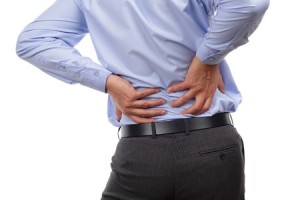
So what is the problem? The problem is joint sprain or subluxation. This is a ligament problem and occurs with small micro traumas over many years, or sometimes with acute events such as car accidents or falls. Over time the ligaments stretch, causing the joints and vertebrae to displace, irritating the delicate nerve fibers. But over a few days or weeks, the pain that accompanies this injury gradually lessens, and in many cases goes away all on its own. But has the problem also gone away? Likely not, because when ligaments are traumatized, the repair mechanism involves scar tissue, which is less elastic than the original, and makes the joint vulnerable to re-injury and sometimes, impairs the free and symmetrical motion of the spine. The doctor of chiropractic examines for this type of joint sprain using palpation for tenderness and edema, and x-rays to see the directions the vertebrae have moved towards. These specific analyses can tell us the vulnerable directions and how the vertebrae need to be repositioned to promote good alignment and good posture.
The adjustment is designed to reduce this misalignment, and induce more symmetric motion. When movements are asymmetrical in the spine, they can lead to premature degeneration of the spine and arthritis. This may be why a simple task such as lifting a laundry basket can flare up the back so easily. You may be lifting with good form and posture but with an asymmetrical spine, the loading is very off balance. Sometimes the disks are so damaged that a simple sneeze is enough to cause excruciating pain. So when these trivial events seem to trip you up, it means there is an underlying problem that is not getting corrected.
Dr. Ward Beecher practices at Beecher Chiropractic Clinic at 1001 Pineloch, Ste 700 Houston, TX 77062. You can schedule an appointment at BeecherChiropractic.com or by calling (281) 286-1300. If you have any questions regarding this blog, please comment below!
Whiplash and Treatment Delay: Does It Matter?
To download a copy of this newsletter, please click here.
Clear Lake Doctor of Chiropractic comments: When a person is involved in a car accident, the inevitable question comes up: should I see a doctor? In most cases the answer is yes. But why is this important?
A collision between two vehicles imparts a considerable amount of force on the body and spine. Even in low speed  collisions, the forces add up to several times the force of gravity. So what does this mean? It means your body generally cannot resist such large forces without being injured. These injuries may be minor, such as a muscle strain or more substantial, involving stretching of the disks and ligaments of the spine.
collisions, the forces add up to several times the force of gravity. So what does this mean? It means your body generally cannot resist such large forces without being injured. These injuries may be minor, such as a muscle strain or more substantial, involving stretching of the disks and ligaments of the spine.
Will these injuries always cause pain right after the collision? Only if there is severe damage to tissues will you experience immediate pain after a collision. In fact, having instant severe pain is a good indicator that you suffered a severe trauma. But most low speed collisions do not produce this type of instantaneous and intense pain. Instead, the person may feel “shaken up” or a little stiff. Unfortunately many patients interpret this stiffness as nothing more than a simple muscle strain and do not seek medical or chiropractic attention. Up to two weeks can go by before you start to feel the effects of a whiplash injury. This is why it is important to see a doctor immediately to see if things are truly ok following an accident.
Only a doctor can examine your spine, pressing on different structures and seeing if your movements are fluid, pain-free and symmetrical. You will find it difficult to do this type of examination on yourself. In addition, x-rays may be needed to see the posture and alignment of your cervical spine. If you had radiating pain or symptoms of a brain injury, then an MRI may also be needed to see the soft tissues that x-rays cannot detect.
Without these types of important examinations it is hard to say if you’ve been injured significantly following an accident. Treatment delay, if you have been injured, will not help to get you back to health quickly. In fact, if you limited your activities and neck movements, this could impair your function down the road. Simply taking pain medications to restore the alignment of your spine will not be enough.
Dr. Ward Beecher practices at Beecher Chiropractic Clinic at 1001 Pineloch, Ste 700 Houston, TX 77062. You can schedule an appointment at BeecherChiropractic.com or by calling (281) 286-1300. If you have any questions regarding this blog, please comment below!
Can I Diagnose Carpal Tunnel Syndrome Myself?
To download a copy of this newsletter, please click here.
Clear Lake Doctor of Chiropractic comments: We are so used to fixing everyday problems ourselves in society today, that we sometimes do this when it comes to health care. The “can-do” American spirit of “pulling yourself up by your boot straps” is alive and well. We are bombarded by advertising messages that tell us if we have a pain in the wrist or back, then just go to the drug store and get some pills. The messages seem to make sense. If I have a problem with my wrist, then it must be carpal tunnel syndrome, right?
Nothing could be further from the truth. The reality is that hand and wrist pain or numbness can come from many  different causes-some even very serious diseases such as cancer. Even a disease such as diabetes can show up as wrist or hand pain. There are also different types of arthritis that can show similar symptoms. Only through x-rays and laboratory tests can these distinctions be made.
different causes-some even very serious diseases such as cancer. Even a disease such as diabetes can show up as wrist or hand pain. There are also different types of arthritis that can show similar symptoms. Only through x-rays and laboratory tests can these distinctions be made.
Also at issue is the fact that long nerves run from your neck and spinal cord and down your arm to the hand. An injury anywhere along the course of this nerve, could make you feel pain in your fingers or hand. And then, of course, there are wrist traumas or repetitive motion injuries that can further complicate the picture.
This should illustrate to you how important a thorough diagnosis is before deciding on a cause for a problem and a course of action to get it resolved. Even a detailed history by a doctor will not be enough to determine if you have carpal tunnel syndrome. So if you’ve been diagnosed with this condition and the doctor failed to examine your wrist, the diagnosis can be incorrect. An astute doctor will use the history of the pain combined with very specific tests to determine how your wrist functions. We do these examinations too, but also include an analysis of the neck region, which can cause irritation to a nerve, that then produces hand symptoms.
Once you get the diagnosis correct, there are many options for treatment. Medications, splints, and surgery are tried by many with varying degrees of success. For those who want a more natural, and drug and surgery-free alternative, then chiropractic care is an excellent option to consider.
Dr. Ward Beecher practices at Beecher Chiropractic Clinic at 1001 Pineloch, Ste 700 Houston, TX 77062. You can schedule an appointment at BeecherChiropractic.com or by calling (281) 286-1300. If you have any questions regarding this blog, please comment below!
The Effectiveness of Spinal Manipulation for Treating Low Back Pain
For many people seeking relief from pain in the lower back, their first point of contact is with a medical doctor who prescribes pain medications. However, those who seek treatment from a chiropractor are more likely to experience a significant reduction in pain than those who take prescribed medications for pain, according to a study conducted by the American Chiropractic Association.
If you suffer from pain in your lower back, contact Beecher Chiropractic today for the relief you need. Chiropractic treatment is safe, highly effective and appropriate for just about everyone. To learn more, please call 281-286-1300 to schedule a consultation with Dr. Ward Beecher, your Houston chiropractor.
Headaches…What Is The Link To The Spine?
Houston Chiropractor Comments: Headaches are so common that we rarely question what is the cause. In the case of headache, it can be something as simple as jet lag to something truly ominous, such as a brain tumor.
If you suffer form headaches, it is important that you get the diagnosis right. Remember that head pain is the 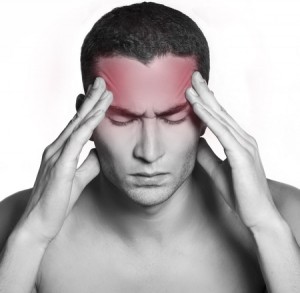 symptom-it is not the actual problem. It is a way that your body gives a signal that you have a problem. So it does require some investigation. Despite what the commercials say on TV, just diagnosing headache as a problem and driving to the drug store for a bottle of pills is not the solution. Yet many of us suffer from daily headaches for years and years and never think…is my headache being caused by a lack of these pills in my diet?
symptom-it is not the actual problem. It is a way that your body gives a signal that you have a problem. So it does require some investigation. Despite what the commercials say on TV, just diagnosing headache as a problem and driving to the drug store for a bottle of pills is not the solution. Yet many of us suffer from daily headaches for years and years and never think…is my headache being caused by a lack of these pills in my diet?
In chiropractic, we look at this problem differently from what you see in a drug ad. First, you need to have a diagnosis and determine the cause for your head pain. Once the cause is determined, then truly corrective action can take place. We pay special attention to how your spine moves and its posture, especially the neck region. Many different research studies have shown that spinal sprains and injuries can produce head pain. And randomized clinical trials have shown that when these spinal problems are addressed with adjustments, the headaches largely disappear…and without the side effects commonly seen with prescription medications.
But every case is different. It’s impossible to know without an examination, if you have a spinal problem, and whether this is the cause for your headache. Our clinic always offers complimentary in-clinic and phone consultations with a Doctor of Chiropractic.
If you are not getting your headaches under control and seemingly endless consumption of pills is not doing the trick, then why not take a different and more natural approach to your health. There is no headache bone in your spine, or a button the chiropractor can push to make the headache go away. We generally find, that once the spinal posture and motion is improved, the headaches go away on their own. It can take one visit or several, but we generally see improvements in a short period time.
Dr. Ward Beecher practices at Beecher Chiropractic Clinic at 1001 Pineloch, Ste 700 Houston, TX 77062. You can schedule an appointment at BeecherChiropractic.com or by calling (281) 286-1300. If you have any questions regarding this blog, please comment below!

